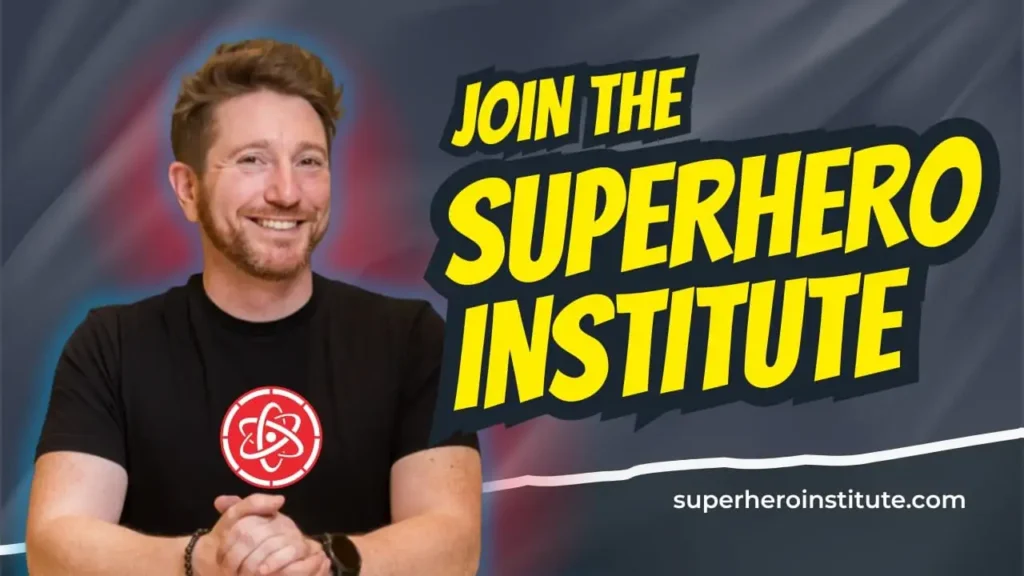Heroic Alchemy: Transforming Fear into Power
My daughter is four years old. But if you ask her, she’s almost five. In fact, she’s almost SIX!
I keep trying to encourage her not to grow up too quickly. As an adult, with a mortgage and bills, I would much prefer to lead the simple life that she does. Not just a lack of responsibilities, but most importantly, the overwhelming sense of discovery and growth, free from the realities of the world.
For her, growing up means “getting bigger.” Beyond her height, what that really means is overcoming fear, exploring new possibilities, and stepping into the person she wants to become.
She can do this because she is surrounded by love and support.
For many adults, growing older means getting smaller. It’s succumbing to fear, closing off new opportunities, and resigning to be the person they’re expected to be.
We do this because we are trapped in overlapping states of fear.
But what if we could change that? We’d first need to understand why this happens.
✉️ Get the Infinite Impact
Join thousands getting weekly wisdom on unlocking hidden potential, building meta-abilities, and creating meaningful change through practical frameworks you can use immediately.
Perhaps It’s Structural
I’m midway through my 44th year, seemingly on track to hit 45 next year.
- I’ve had the opportunity to vote in seven elections.
- I’ve been through roughly 20 years of education.
- I’ve been working for myself for 13 years, following a series of “professional” jobs and earlier temporary service work.
Across all of this experience, one recurring theme stands out: fear—pervasive and often deliberate.
Fear is woven into the fabric of these systems:
- Our Political paradigm sells us a story about Fear. It’s a story about our safety, rights, or future.
- Our Education paradigm teaches compliance through Fear. It’s a scary story forcing us to worry about achieving good grades, being enough, and securing a future.
- Our jobs keep us in line, following orders, careful not to make waves because of Fear. We’re always worried about earning enough to afford “the cost of living” or simply having a future.
This fear colonizes our sense of possibility and forces us into survival mode. Too often, it feels like the fear is winning.
Fear and Division

Whether in politics, education, or work, fear’s most devastating effect is its ability to divide us—even when we’re kind and caring people at heart. It raises the stakes and pits us against one another.
Politics isn’t about coming together to solve shared problems for a better world.
Politics becomes a battleground where the goal is to stop the opposition and demonize those who support it.
Education isn’t about learning to grow, contribute meaningfully, or lead a fuller life.
Education turns into a competition, a scramble to meet arbitrary standards, get ahead, and avoid falling behind.
Work isn’t about collaborating to leverage our unique gifts and make an impact.
Work becomes the ticket to survival. Your co-workers are rivals, and the mantra is “nothing personal, just business.”
This is how dominant structures use fear to maintain power. And we let them because we’ve been conditioned to believe alternatives don’t exist—or can’t exist.
But, something doesn’t add up.
Let’s Do the Math
These numbers might give us some perspective:
- The total number of state legislators in the U.S. is 7,383 (source).
- The total number of federally elected officials, including the President, Senate, and House members, is 536.
As of October 2024, the work-eligible population in the United States (16 years and older, excluding institutions) was 269,289,000 (source).
This means elected representatives make up just 0.002941% of the population. They’re not even large enough to be a rounding error.
Consider this:
- The top 10 companies on the Fortune 500 collectively employed around 7 million people in 2022 (source).
- The C-suite leadership at those companies totals an estimated 110 executives.
C-suite leaders account for 0.001571% of the workforce they have the power to lay off.
The Fear Funnel Is Upside Down
Why do we live in constant fear of systems that use our labor, tax dollars, and participation to wage war around the world, destroy the environment, and enrich the 813 billionaires in this country?
They should fear us.
- It’s our labor that fuels the machine.
- It’s our participation that sustains educational institutions.
- It’s our consent that keeps these systems functioning.
If we collectively turned away from fear, organized ourselves, demanded specific changes, and took care of one another while withholding our labor and participation, these systems wouldn’t stand a chance.
So, the next time you feel the urge to use fear to spur behavior change against those locked in the same struggle with you, please reconsider.
Our strength is in unity.
Heroism Is a Team Sport
Superheroes are often portrayed as remarkable individuals, but in reality, true heroism is collective.
It’s found in our kindness and compassion toward one another. It is our willingness to surround one another with love and support. It’s in our strength when standing together against the grave injustices and fear funneled down from these sparsely staffed structures of dominance.
They can stop me. They can stop you.
They cannot stop us.
P.S. Watch this video in its entirety
I hope you enjoyed this post!
If you liked this post, then you will LOVE my newsletter (The Infinite Impact)
and my learning community (The Superhero Institute).


